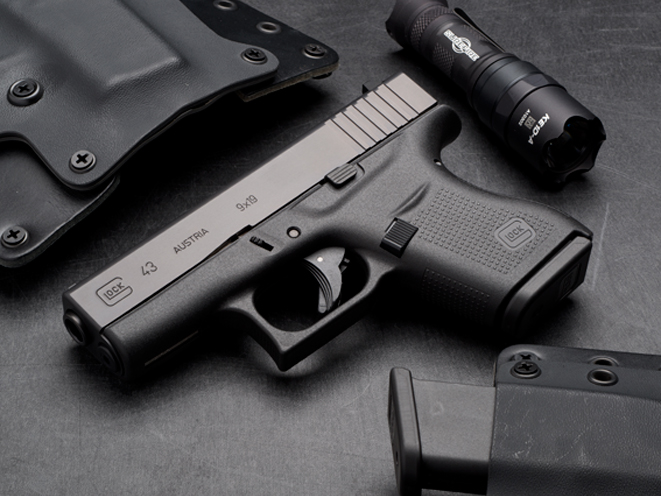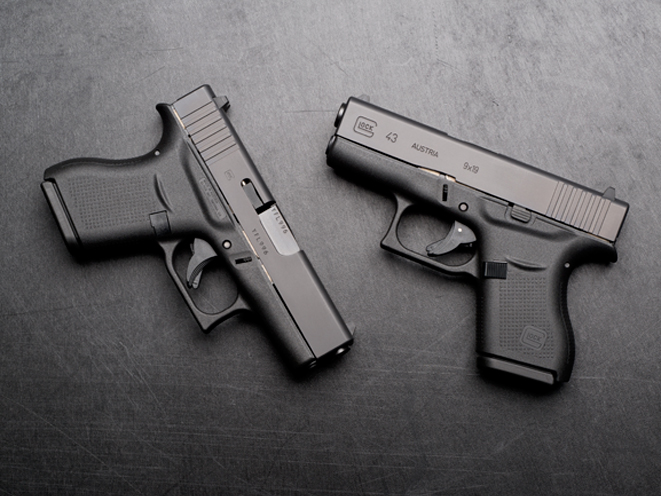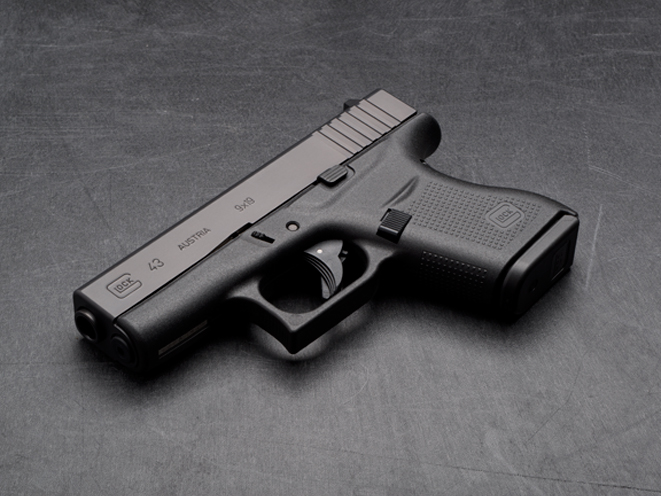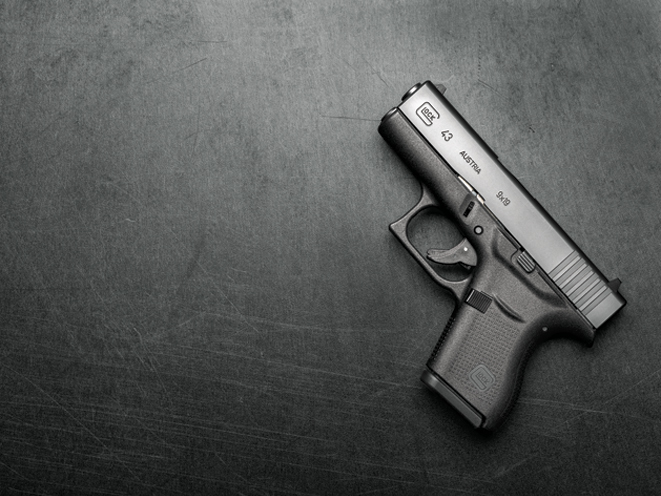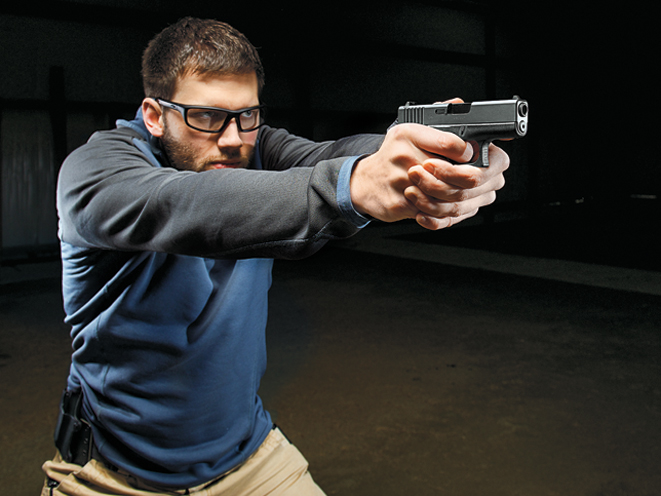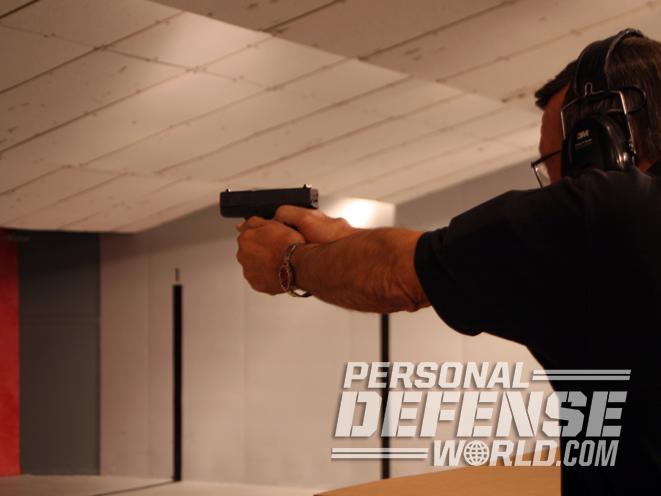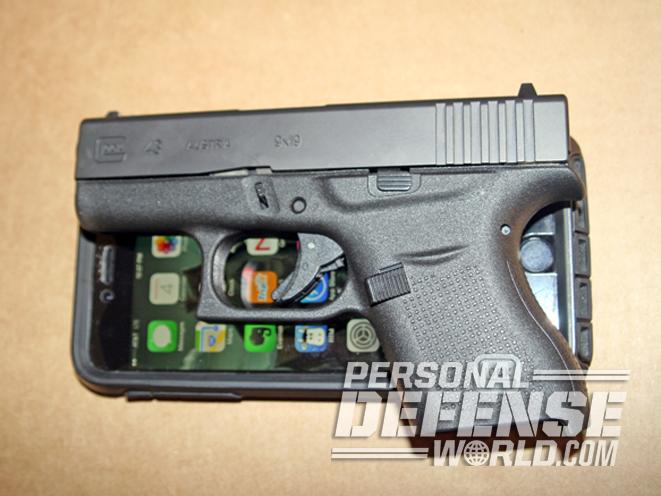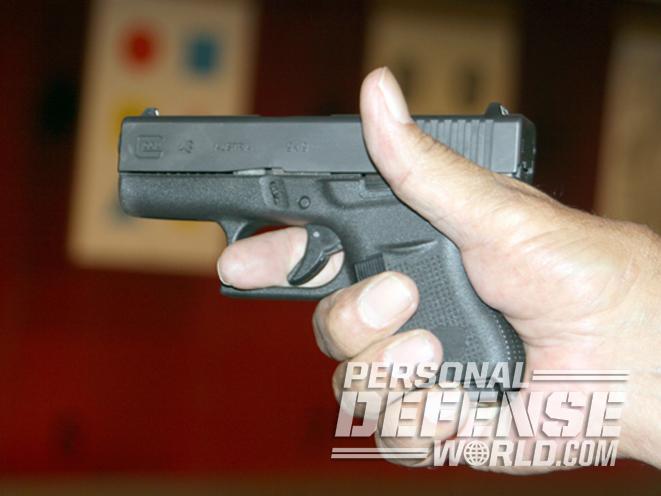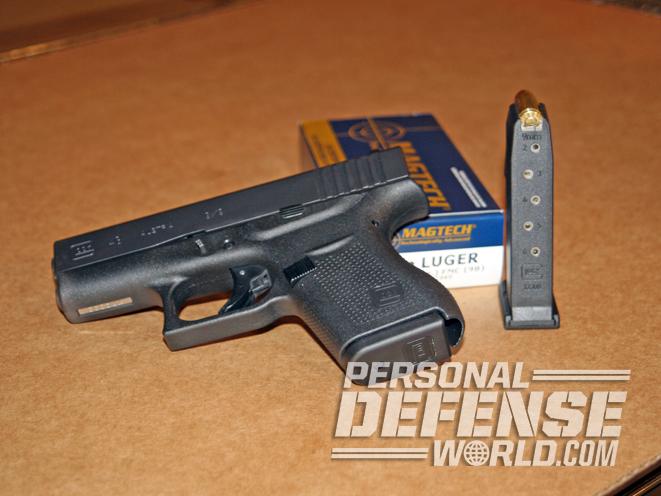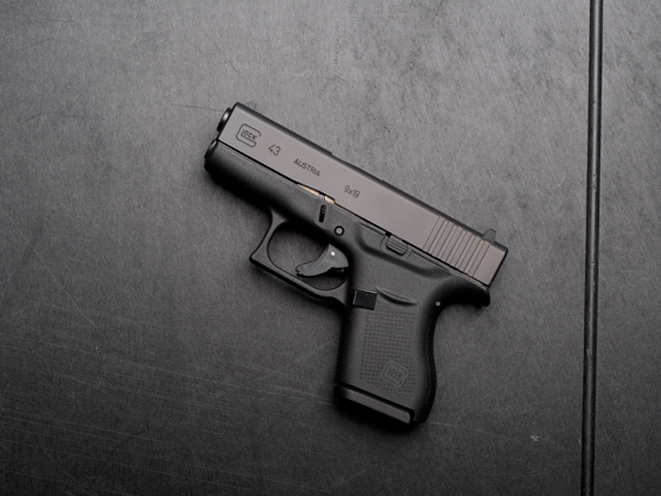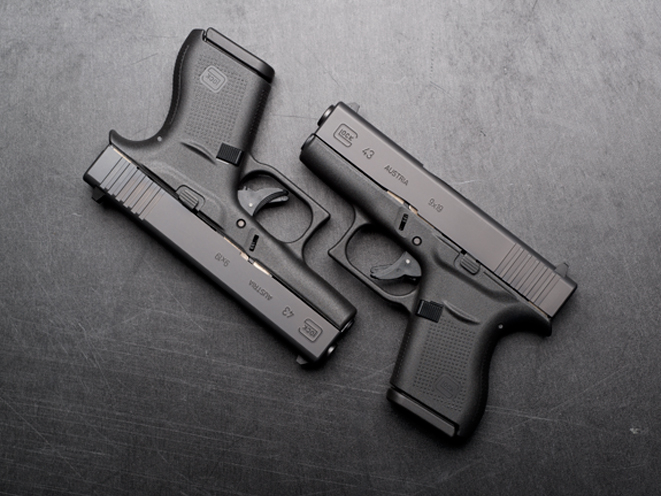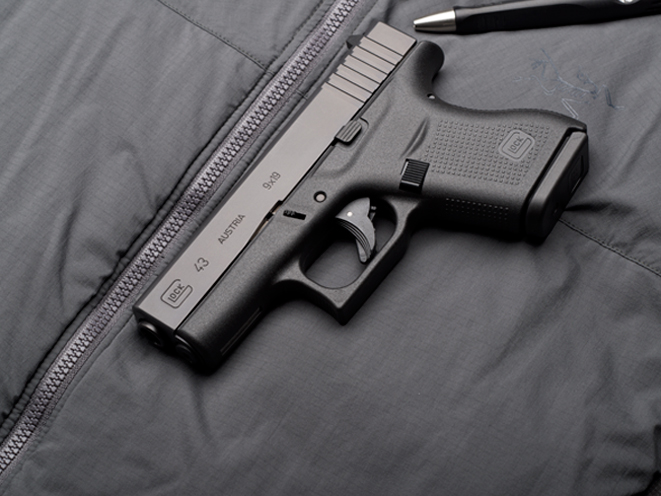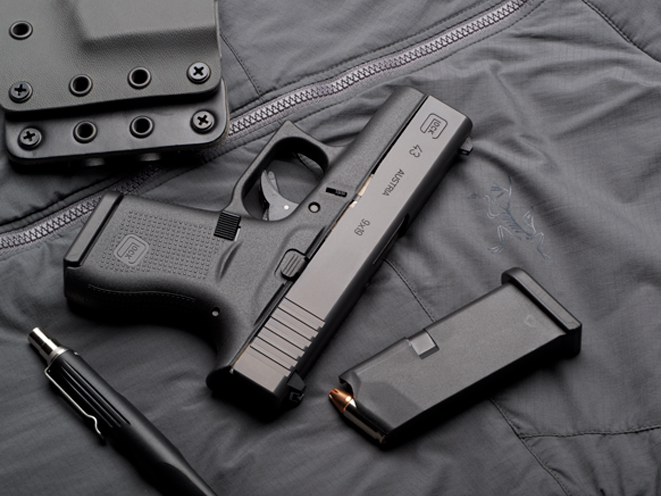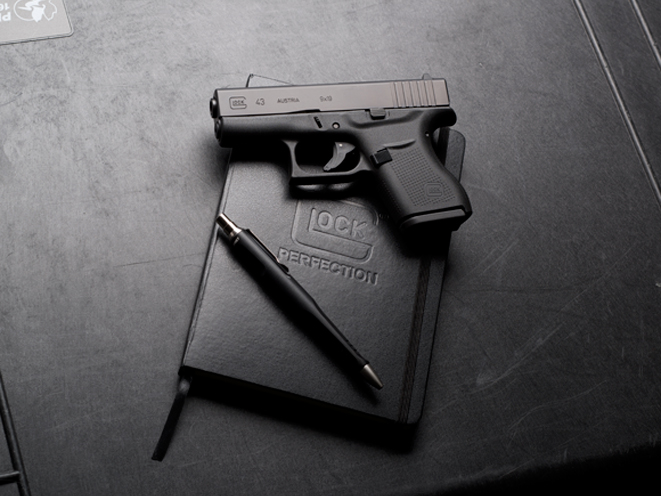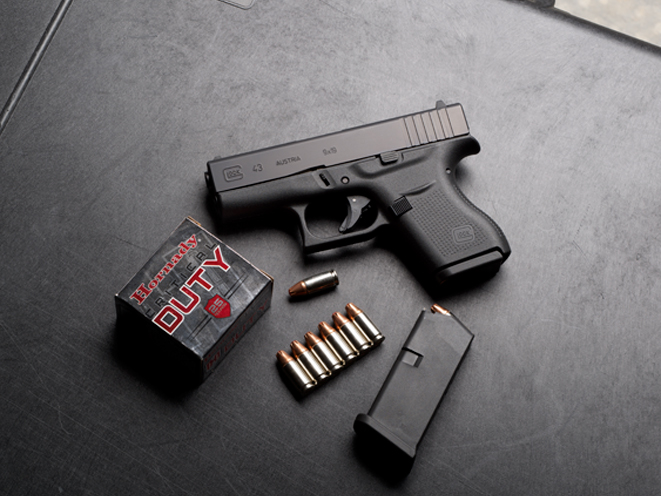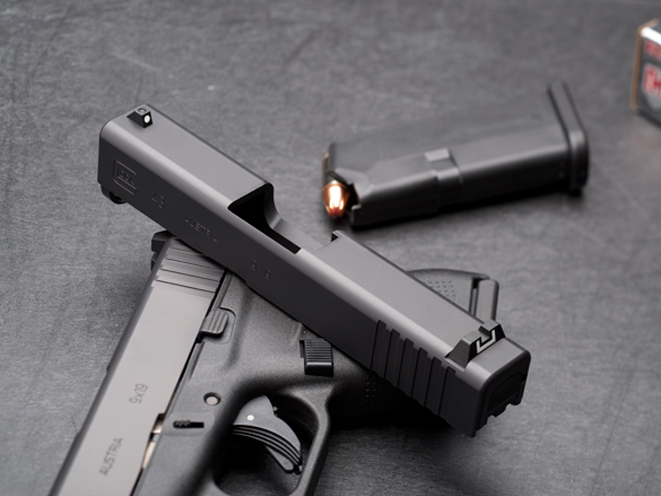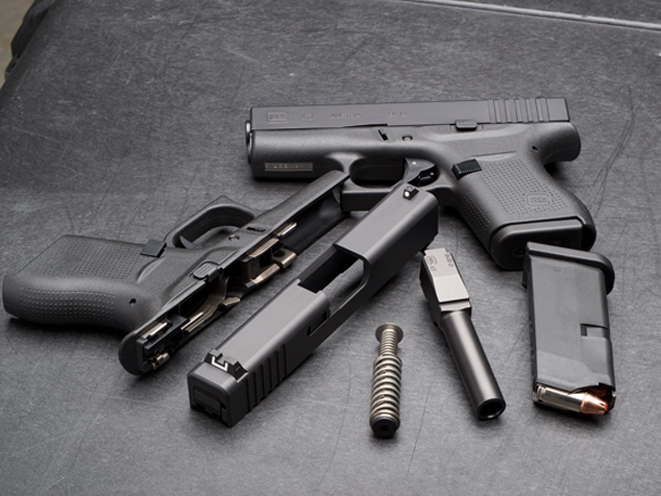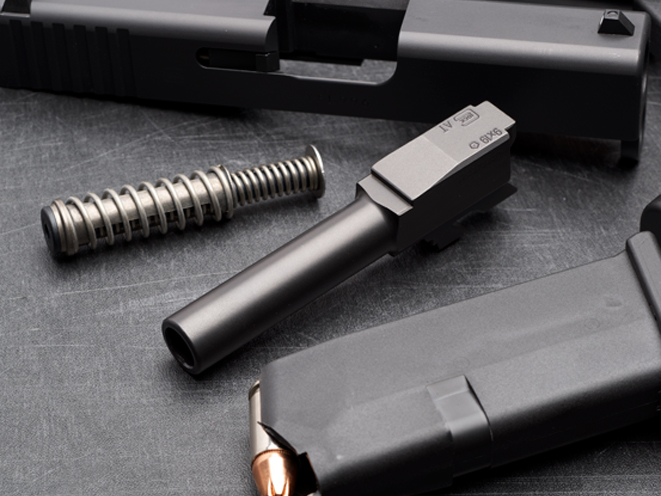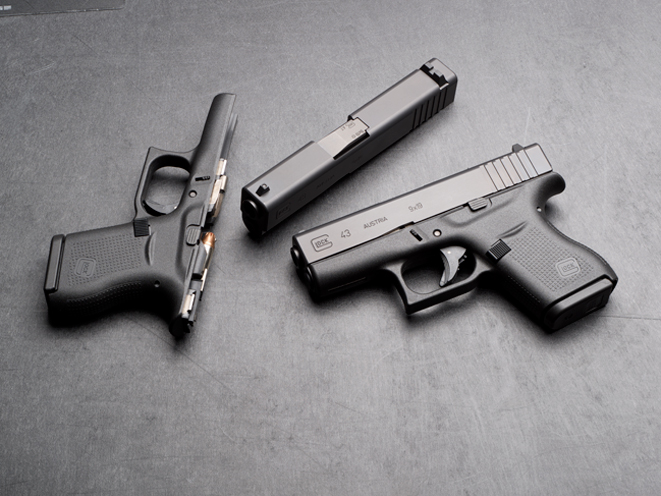In early March of 2015, we got to do an unprecedented tour of the Glock factory and also test the company’s newest pistol, the 9mm Glock 43.
For years, the legions of Glock fans have asked for a slimmer version of the subcompact 9mm “baby Glock” Glock 26, which was introduced in 1996 with a 10-round standard magazine. A more slender variation with a single-stack magazine, these folks reasoned, would be both more comfortable and concealable when carried inside the waistband, and it would be more amenable to pocket carry.
The answer to that long demand, the Glock 43, has a six-round magazine like its 2014 predecessor, the immensely popular Glock 42 in .380 ACP. In each case, one reason for the short butt was to facilitate comfortable, accessible carry and draw from a trouser pocket holster.
Advertisement — Continue Reading Below
Both internally and externally, the Glock 43 has more in common with the Glock 42 than with earlier 9mm Glocks. The front of the grip frame is straight with no finger grooves. In fact, at 0.87 inches, the Glock 43’s slide is the slimmest one that Glock has ever put on a pistol chambered for the 9mm cartridge. Manipulation of the slide, which runs on a double captive recoil spring assembly, did not prove difficult. If you’ve held the Glock 42, the Glock 43 feels like the same gun on a very mild dose of steroids.
Pocket Nine
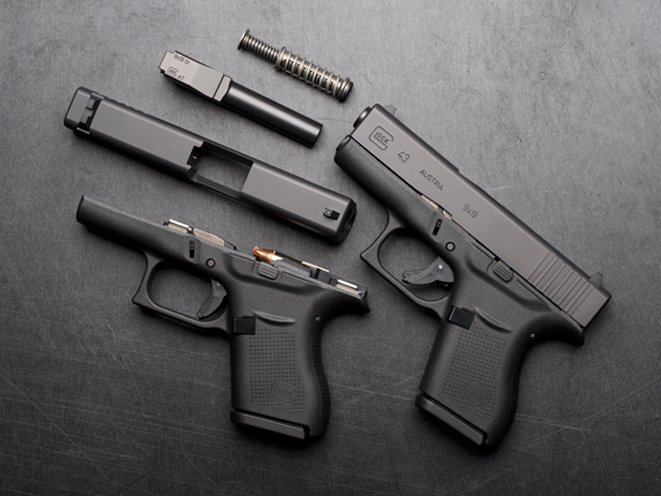
Advertisement — Continue Reading Below
Where you find the major dose of steroids is in the cartridge the Glock 43 is chambered for. The 9mm is the standard U.S. military pistol cartridge, and has been since the mid-1980s. It is standard issue for many police departments and, in fact, there is currently a trend for law enforcement agencies with more powerful pistols to swap for 9mm designs. By contrast, no police agency in the U.S. issues the .380 ACP as a primary uniform patrol pistol; it’s a question of adequate power. The Glock 43 is not only chambered for full-power 9mm loads, but rated for hot +P ammunition.
RELATED: Glock 43 – An Ultra-Slim, Easy-To-Conceal 9mm
Trigger reach from the backstrap is 2.56 inches on the Glock 43, which is distinctly shorter than the wider-gripped Glock 26 but longer than the 2.40-inch reach on the Glock 42. The trigger-reach dimension is a key to the oft-quoted phrase “the gun should fit your hand.” Glock’s standard-frame 9mm pistols, from the short Glock 26 to the long-slide Glock 34, are optimized for an average-sized, adult male hand, with the pad of the distal phalange centered on the trigger. In such a hand, the crease at the distal joint of the trigger finger falls naturally center on the Glock 43’s trigger. This is the finger/trigger interface that old time double-action revolver masters called the “power crease,” because it gives the shooter more leverage. A very short-fingered person will find the pad of their trigger finger hitting the center of the Glock 43’s trigger. One 5-foot-tall female shooter in our test group loved the fit, and exclaimed, “I want one!”
Advertisement — Continue Reading Below
Concealable Perfection
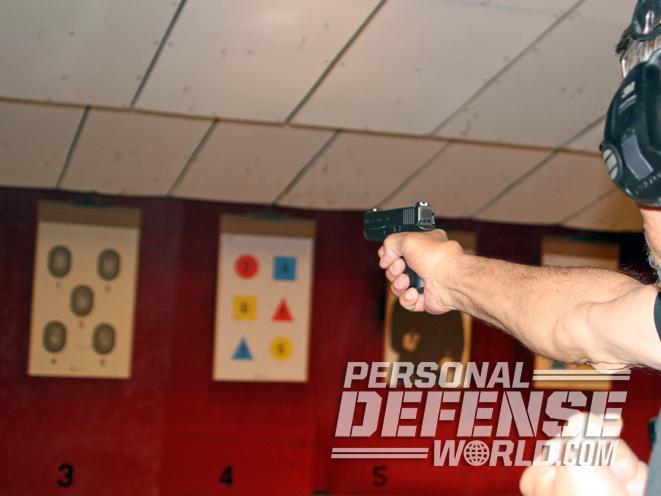
We shot standard-pressure 9mm FMJ ammunition (mostly MagTech at my end of the range) during our early exposure to the Glock 43. Recoil was heavier than that of a Glock 42 in .380 ACP, naturally, and since the Glock 43 weighs barely over 16 ounces unloaded, it moves more in the hand upon firing than the thicker Glock 26, which has more mass to soak up recoil. Nonetheless, everyone I talked to felt the Glock 43’s recoil was mild. The shooter I was with, who, like me, is a veteran of high-round-count shooting classes and matches, agreed with me that we’d have no concerns about taking a Glock 43 for an extended shooting session.
Advertisement — Continue Reading Below
The sights are the same as on other Glock models: a fixed white-outline rear sight and a white-dot front sight. We were told night sights would soon be available as a factory option. The gun will come with two 6-round magazines, one flat-bottom magazine for maximum concealment and the other with a flange for the pinkie finger, which many shooters find more comfortable for shooting.
RELATED: New Holster Options For The GLOCK 43
Jamming when fired from a limp-wrist hold is a concern with many autopistols, but there’s no reason to be concerned about that with the Glock 43 from what I could see. I “barely held” the test Glock 43, with wrist and elbow deliberately limp, and while there was profound muzzle jump at each shot, the pistol cycled every time. The Glock 43 also ran fine when fired upside down, which some gunsmiths think is a good test of an autoloader’s cyclic reliability.
Advertisement — Continue Reading Below
I am one of many people on the waiting list for their own Glock 43. It will be fun to put it through its paces. So far, the Glock 43 is a very promising concealed-carry pistol. Most in the industry expect it to be hugely popular.
For more information, visit http://us.glock.com or call 770-432-1202.
